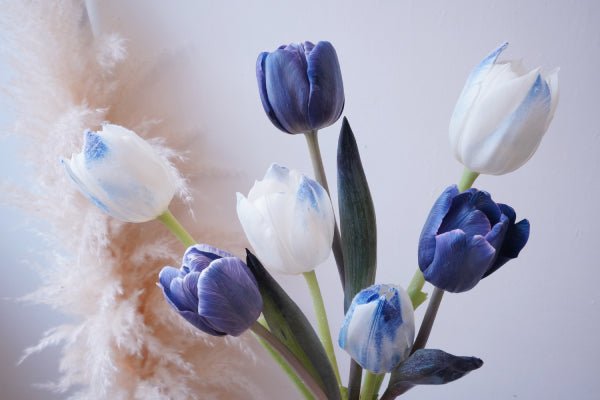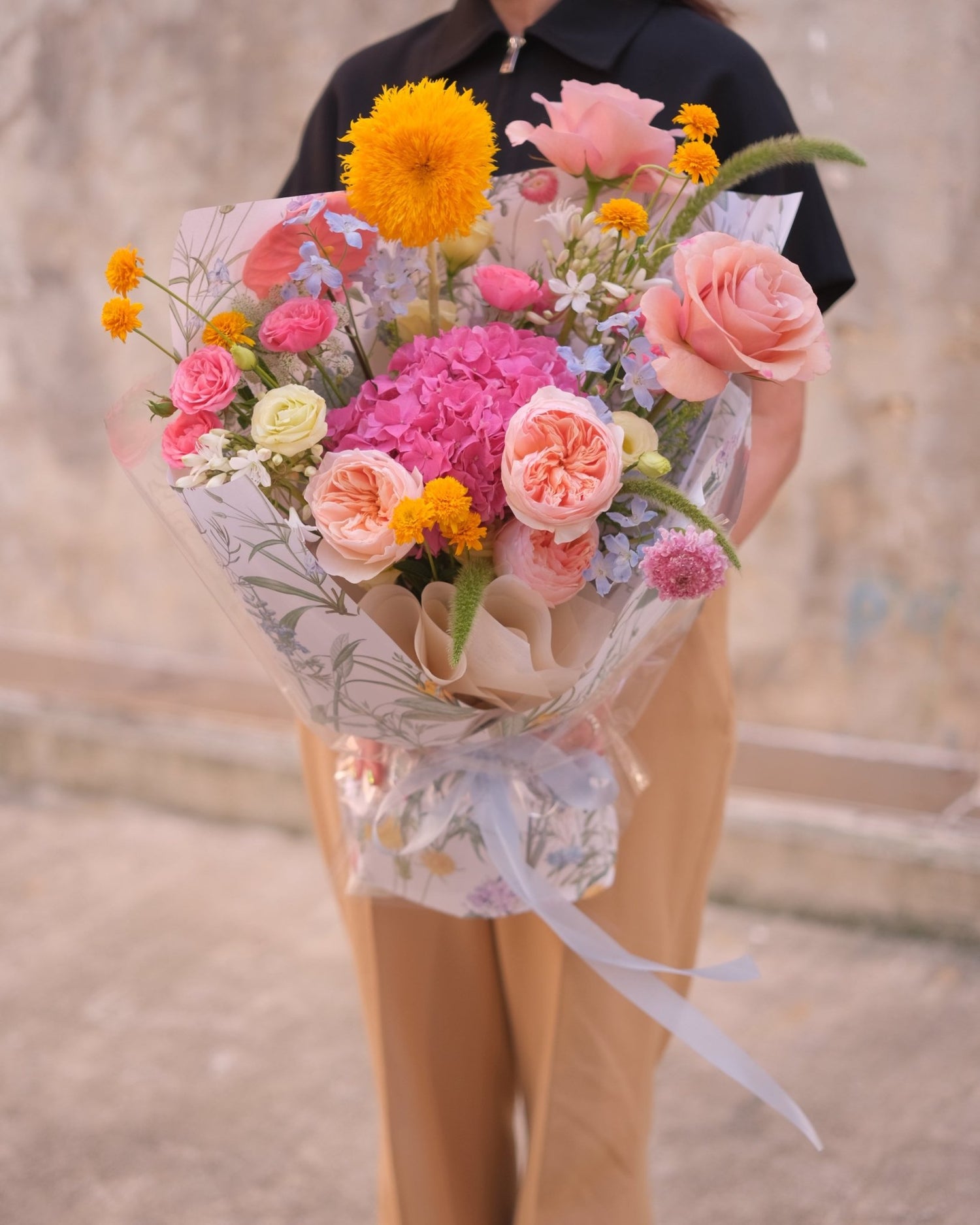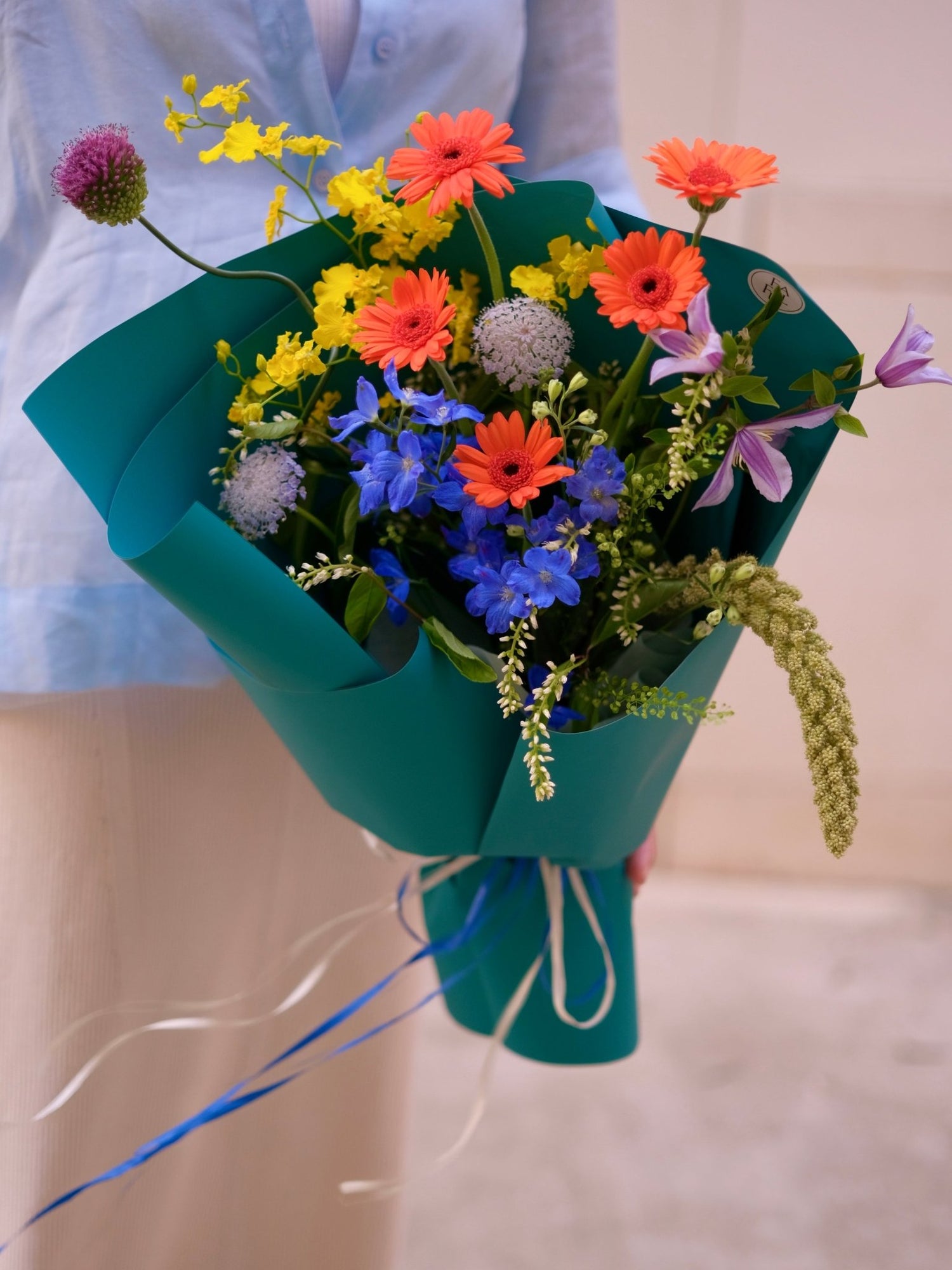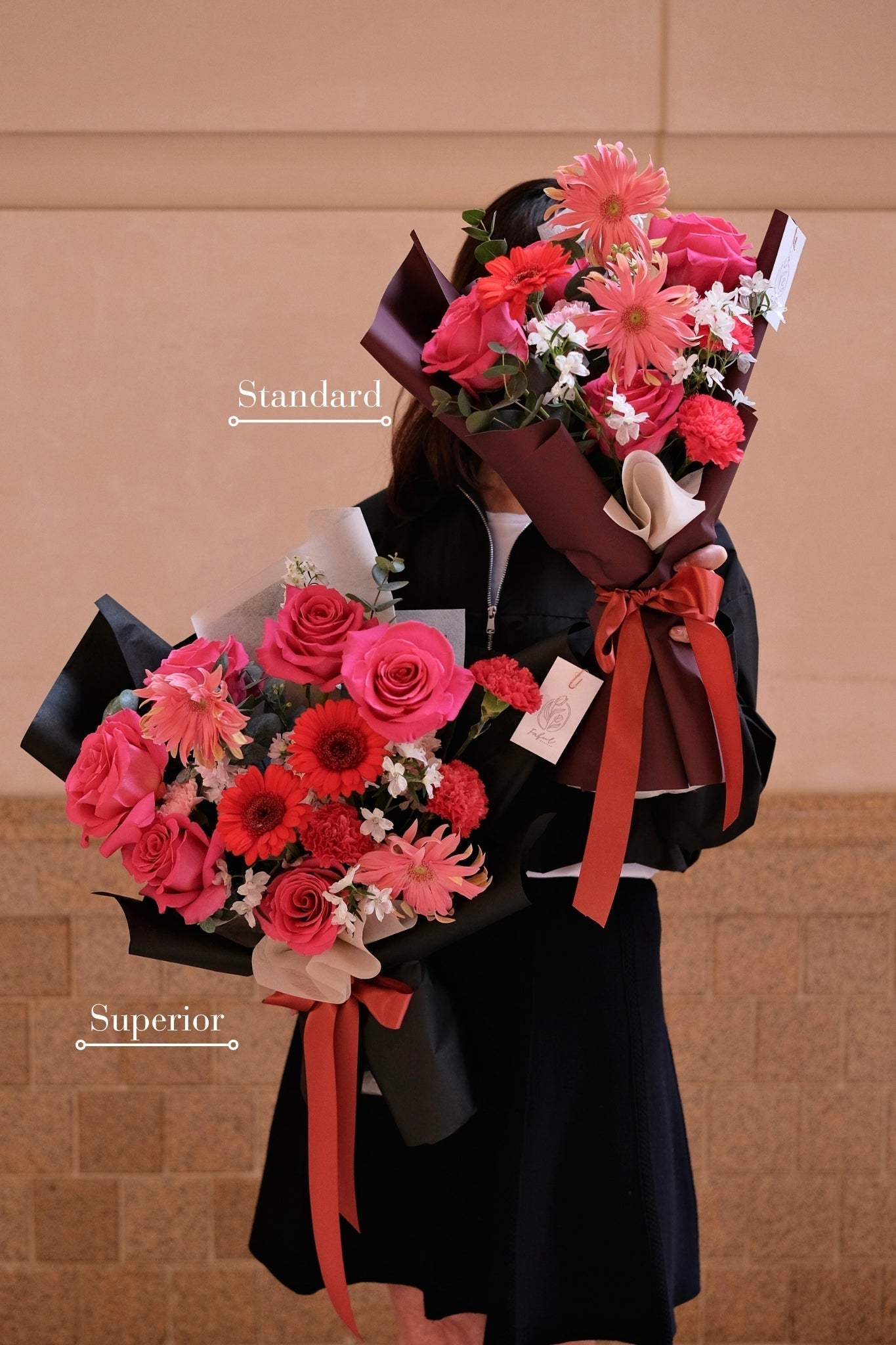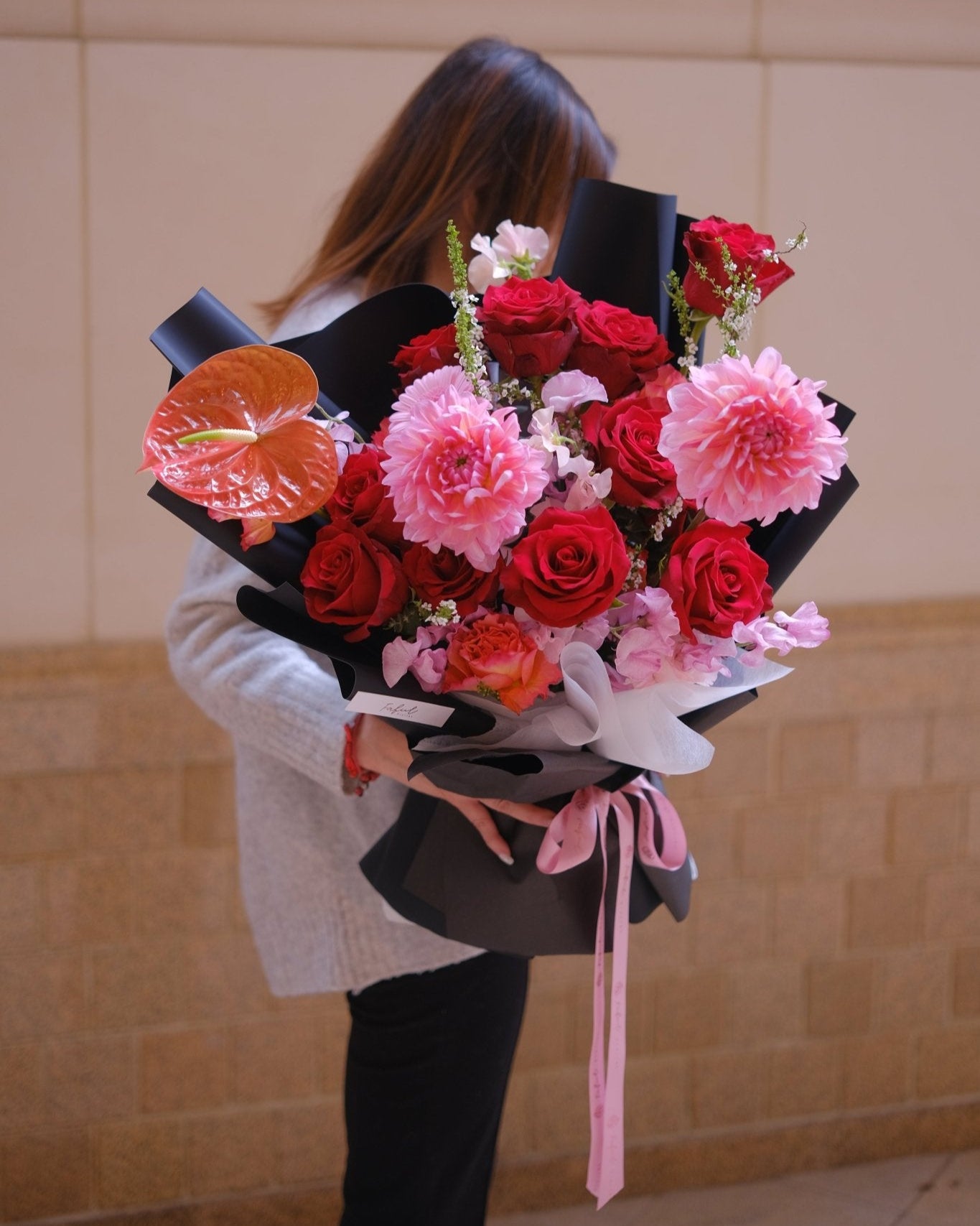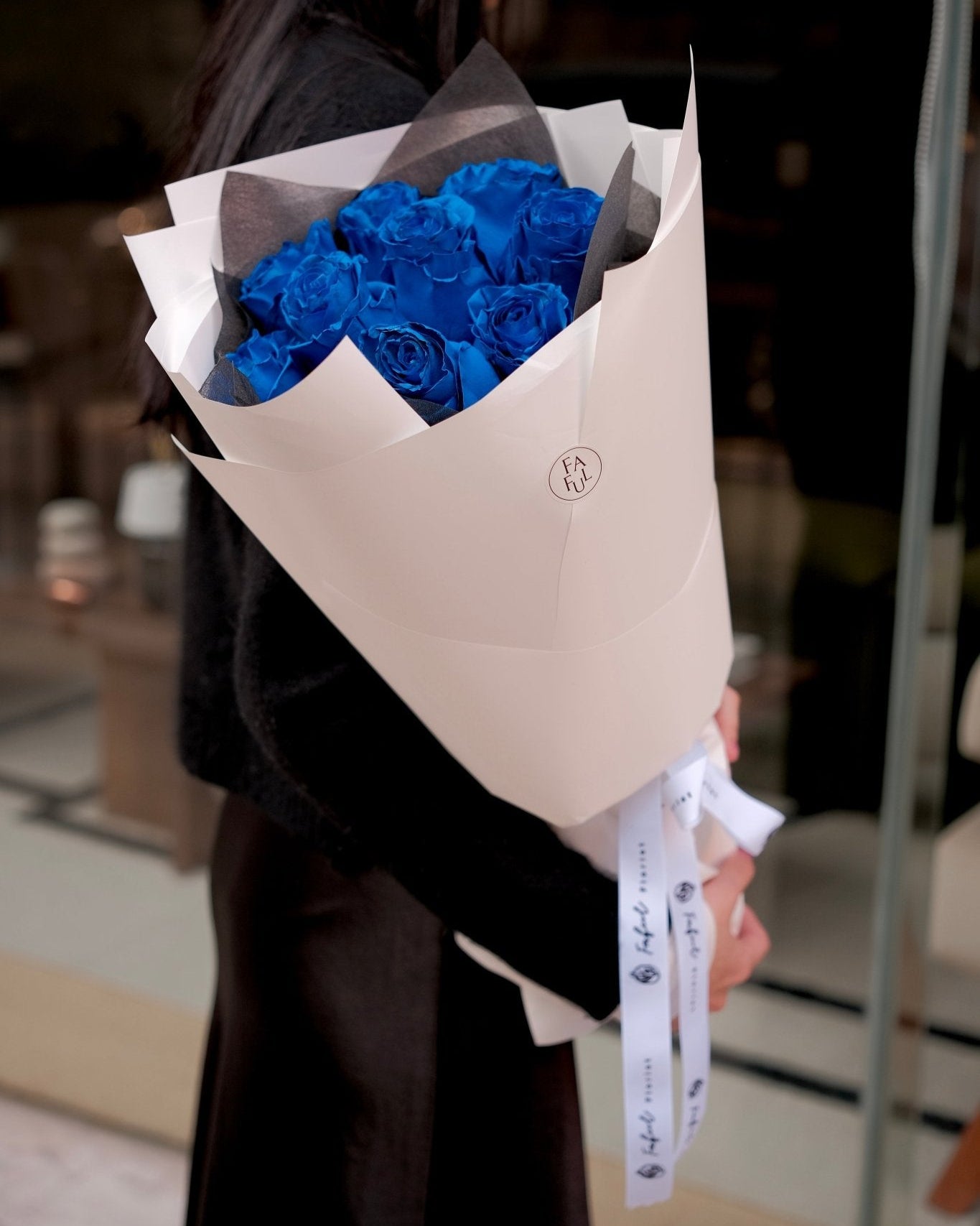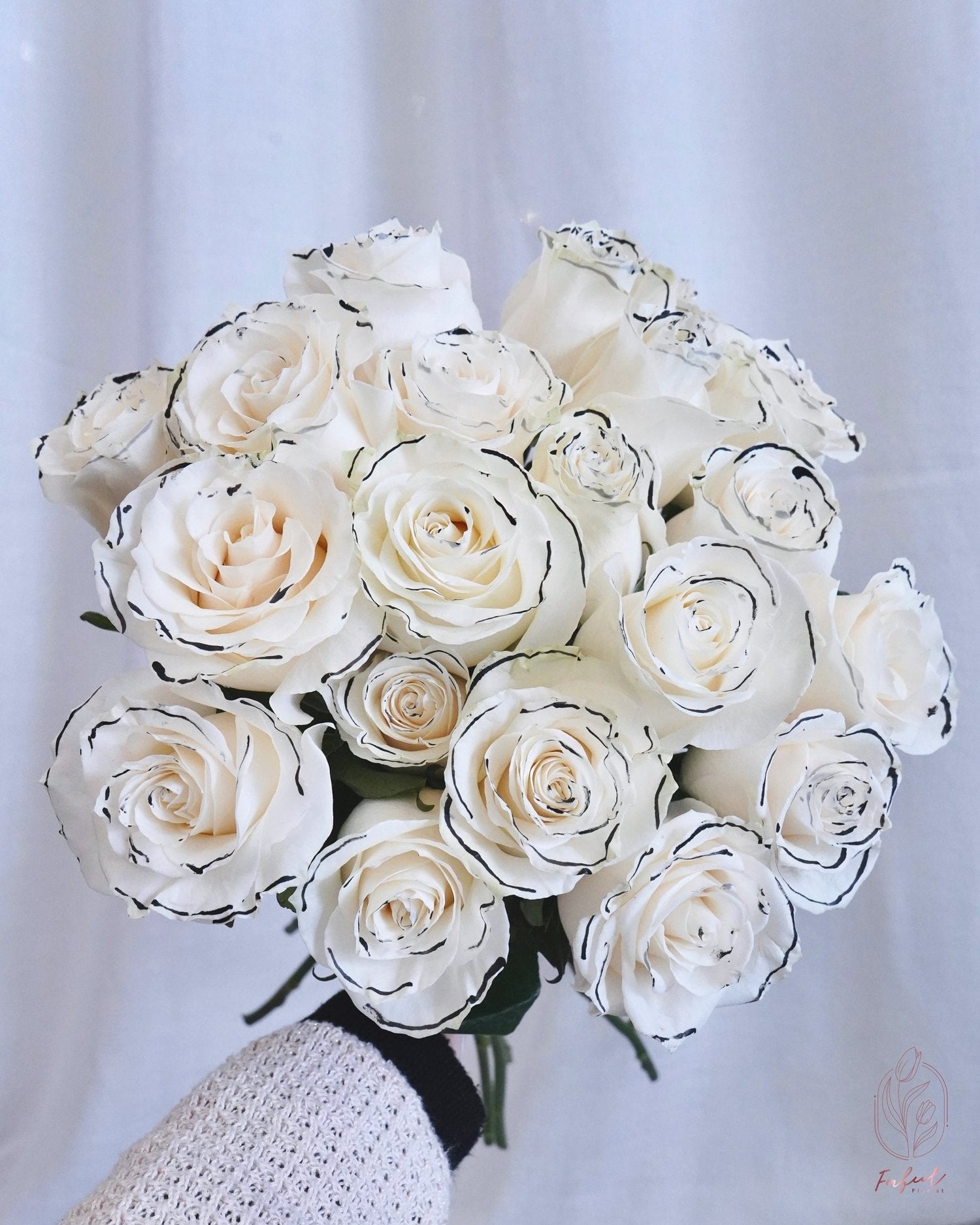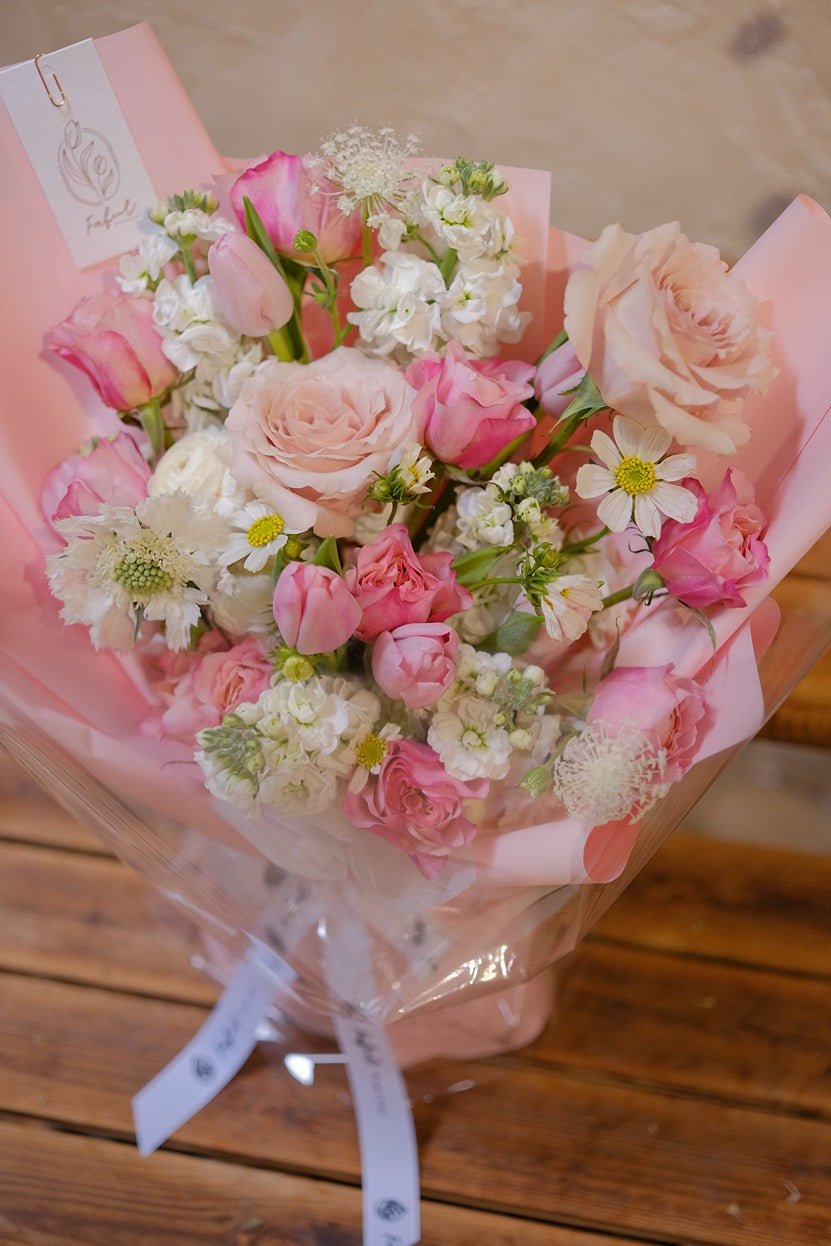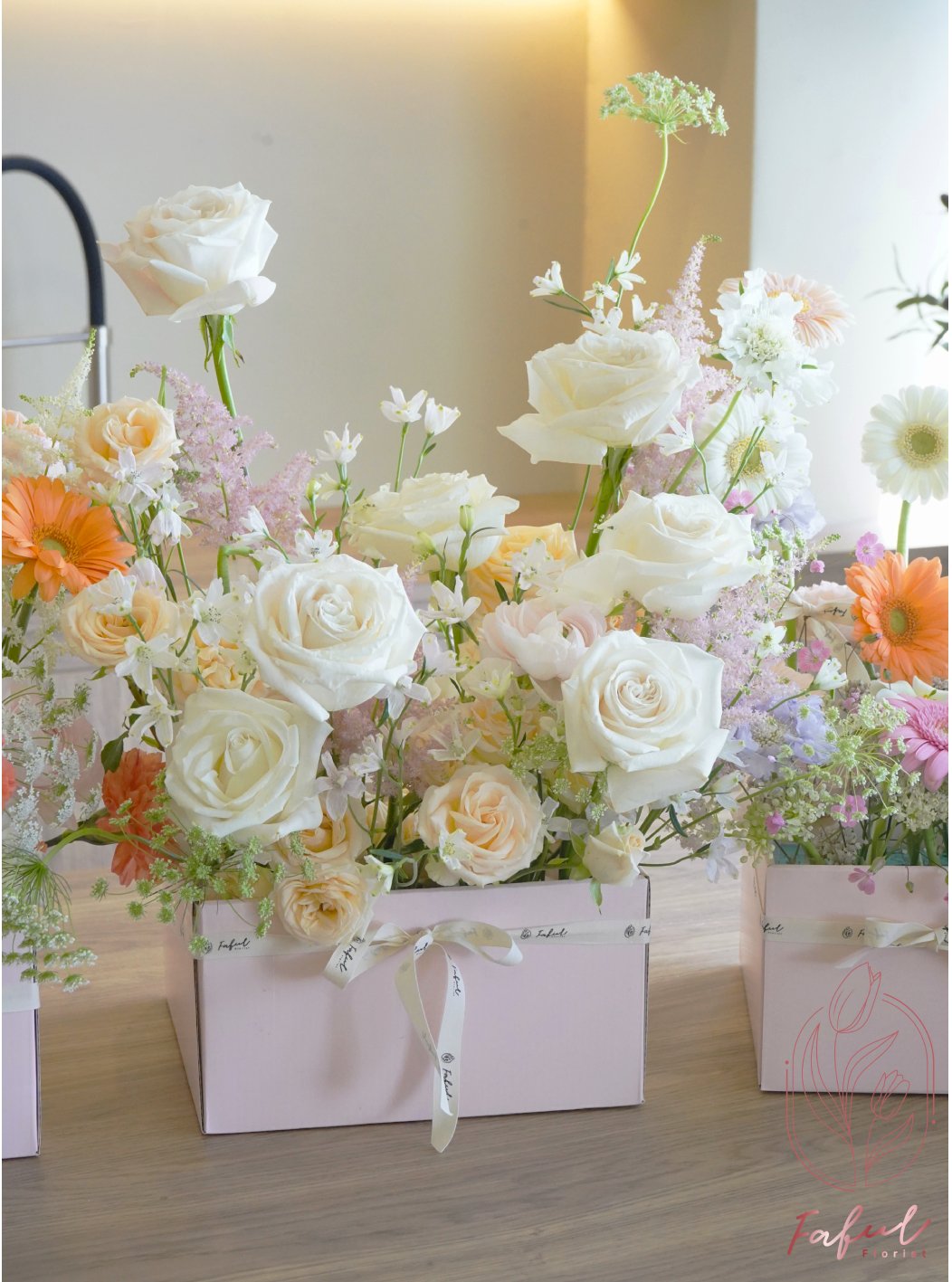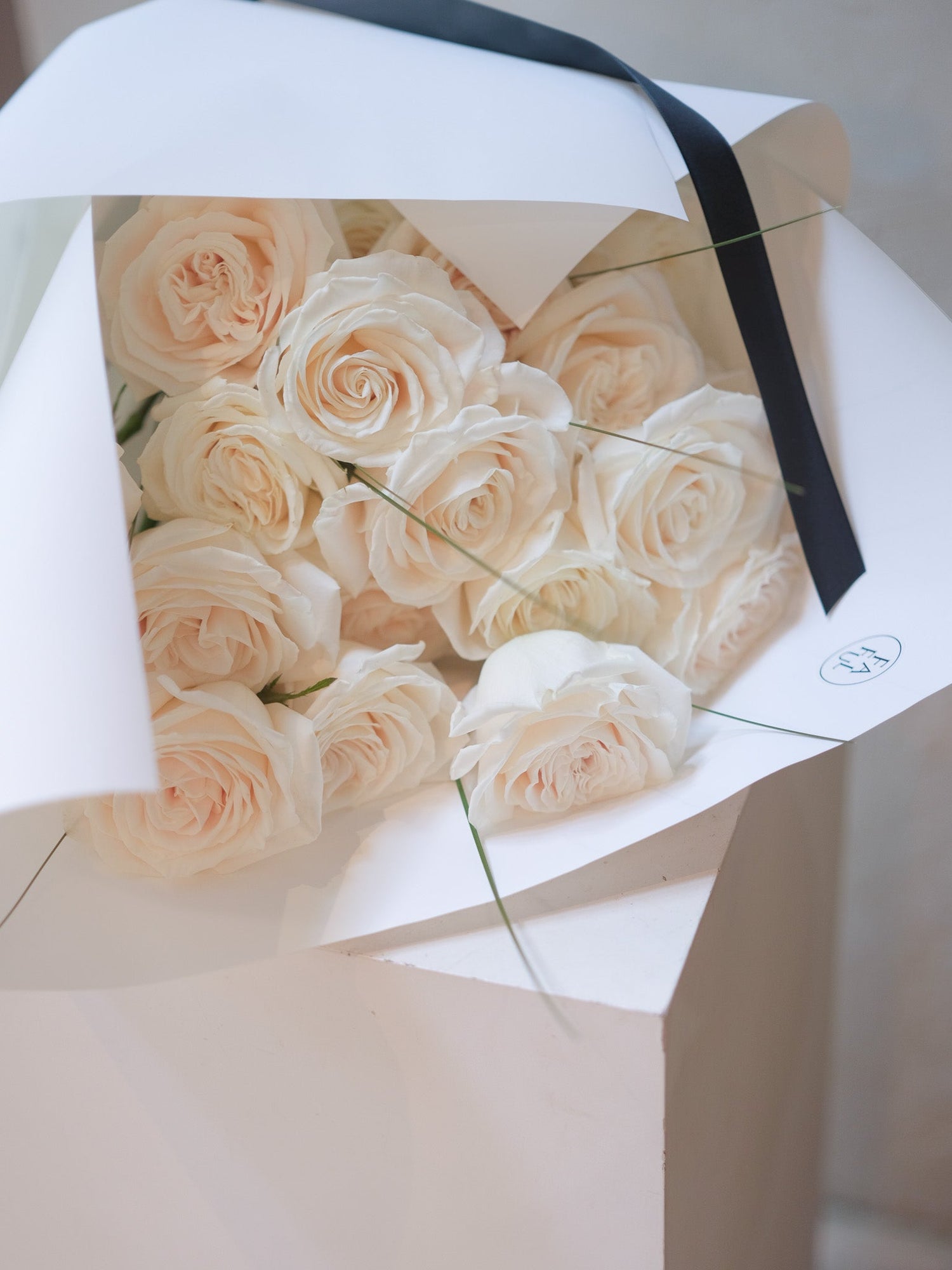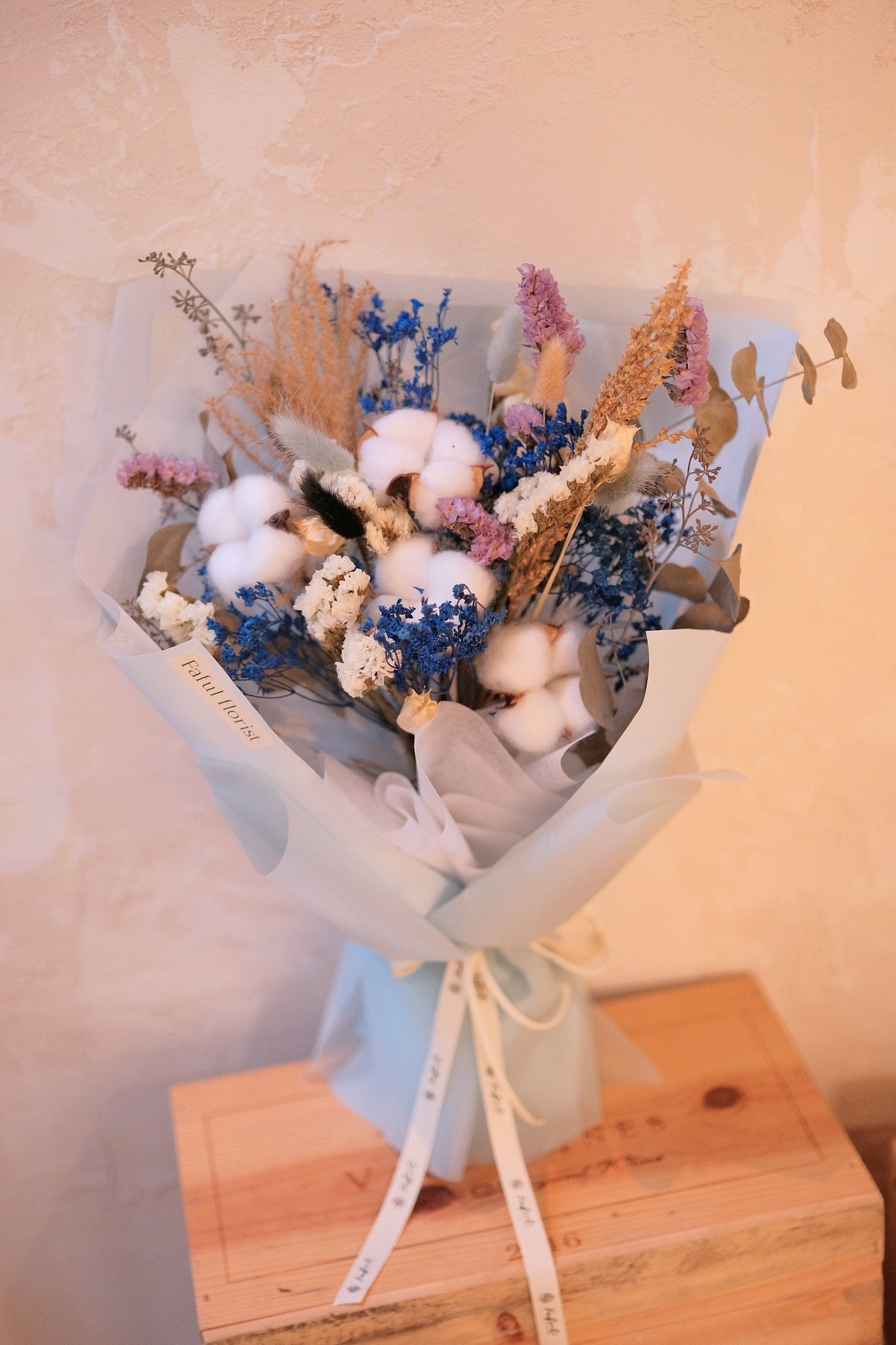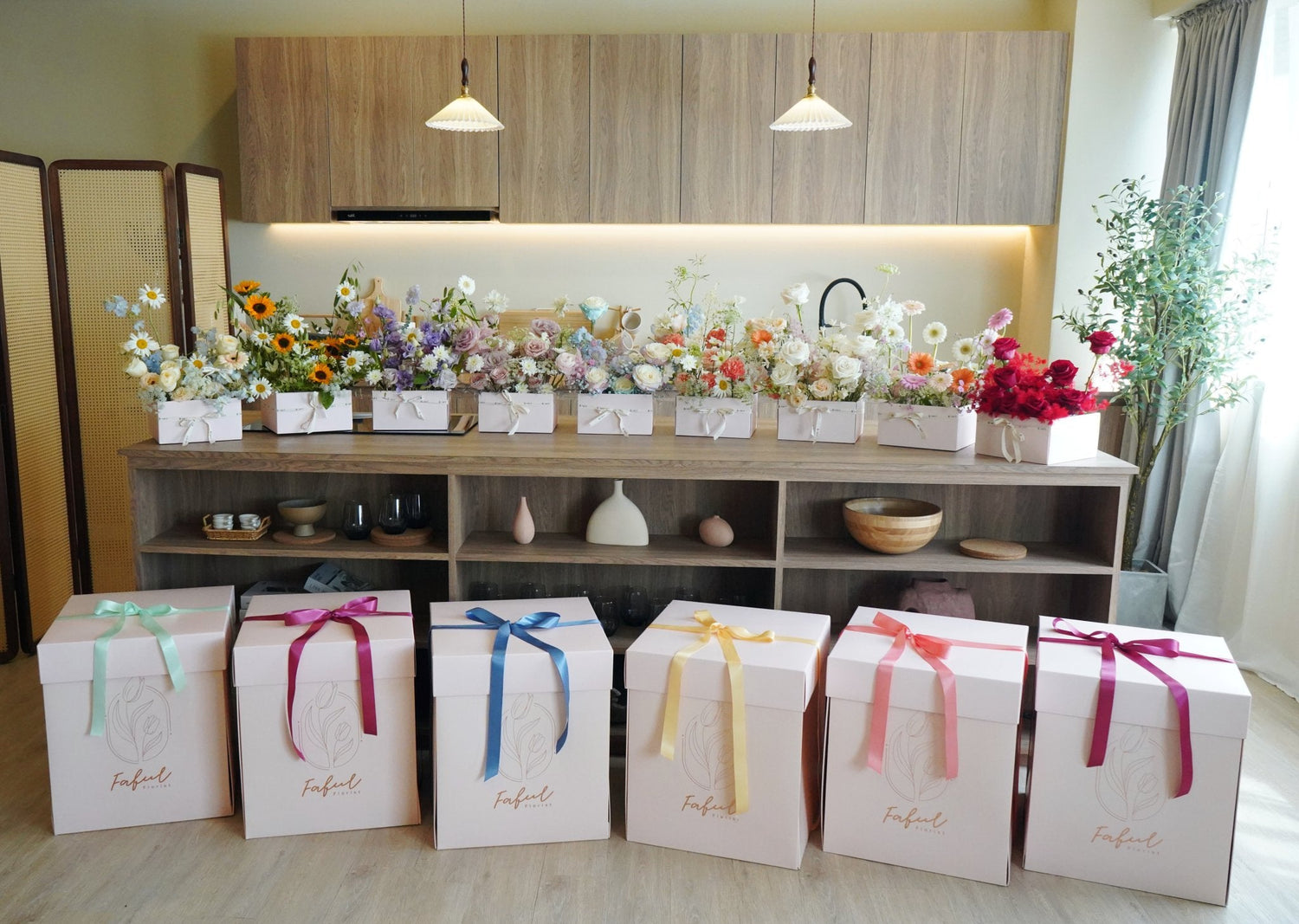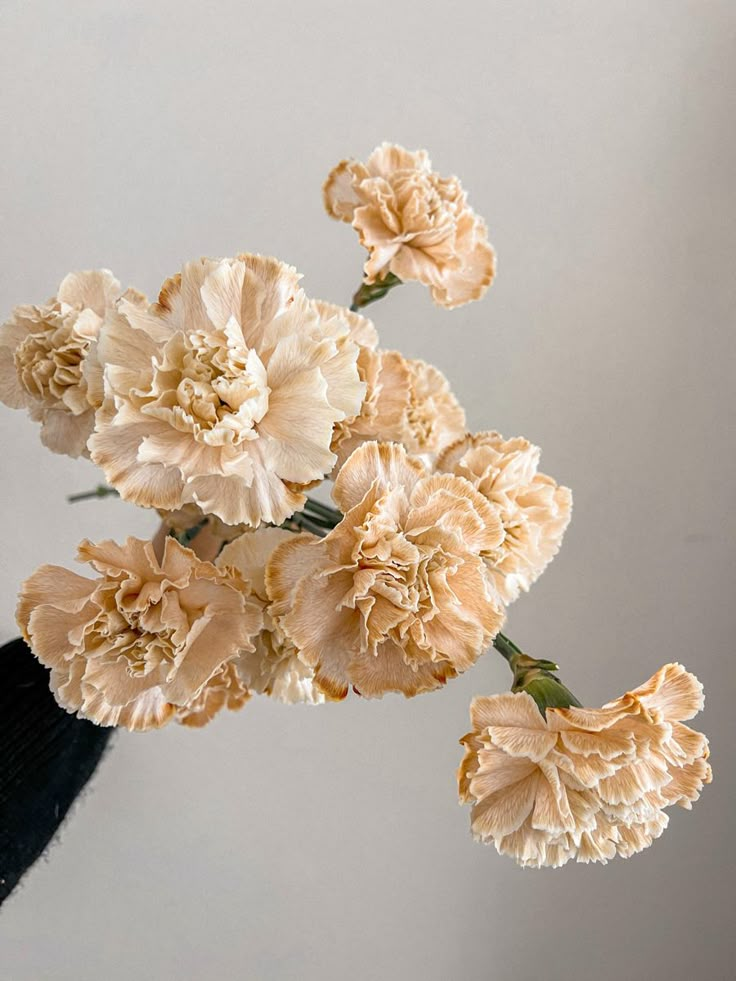
The Complete Guide to Carnation Meaning: Color Meanings, Gifting Occasions & Cultural Insights
Estimated reading time: 8 minutes
Table of Contents
- 1. Basic Introduction to Carnations
- 1.1 Origin and History of Carnations
- 1.2 Evolution of Carnation Symbolism
- 1.3 Overview of Common Carnation Varieties and Colors
- 2. In-depth Analysis of Carnation meaning
- 2.1 Red Carnation: Passionate Love and Admiration
- 2.2 Pink Carnation: Eternal Motherly Love and Gratitude
- 2.3 White Carnation: Pure Blessings and Respect
- 2.4 Purple Carnation: Elegance, Uniqueness, and Change
- 2.5 Striped Carnation: Refusal and Subtle Expression
- 3. Meaning Differences in Special Carnation Varieties
- 3.1 Multiple Meanings of Spray Carnation
- 3.2 Delicate Emotions of Mini Carnation
- 3.3 Meaning of the Original Species Dianthus Caryophyllus
- 4. Occasions for Gifting Carnations and Arrangement Art
- 5. Cultural Differences and Traditional Customs
- 6. Carnation Preservation and Care
- 7. Common Myths and Taboos
1. Basic Introduction to Carnations
1.1 Origin and History of Carnations
The scientific name of the carnation, Dianthus caryophyllus, originates from the Greek words for "divine flower." Its cultivation history dates back over 2000 years along the Mediterranean coast. In ancient Greek and Roman literature, the carnation was called the "flower of Zeus" and was widely used in religious ceremonies and festival decorations, establishing its esteemed status.
Medieval European Christian culture endowed the carnation with special religious significance. Legend holds that it bloomed where the Virgin Mary's tears fell, making the white variety an Easter altar flower and giving rise to symbolic meanings of motherhood and eternal love. This religious connection profoundly influenced the subsequent development of its Meaning.
During the 19th century Victorian era, the Language of Flowers system took shape. Carnations, with their long vase life and rich colors, became a preferred medium for conveying hidden emotions. Botanist John Parkinson systematically recorded hybridization techniques in his work "Paradisus," leading to a significant increase in varieties, with different colored carnations gradually developing corresponding meanings.
A key moment in establishing the modern Meaning system occurred in the early 20th century when American social activist Anna Jarvis promoted the white carnation as the symbolic flower for Mother's Day. After the holiday became institutionalized internationally, "motherly love" became its core meaning. This also catalyzed the contemporary general understanding of pink for gratitude and red for admiration, completing the historical transformation of Carnation meaning from religious symbol to secular emotion.
Orange Hermes (Juliet Garden Rose)
1.2 Evolution of Carnation Symbolism
The evolution of Carnation meaning spans centuries, transforming from a religious symbol to a modern medium for emotional expression. In ancient Greek and Roman times, carnations were sacred ceremonial flowers, often used in religious wreaths. In Christian culture, the legend that the Virgin Mary's tears gave birth to carnations established its religious symbolic status of motherhood and eternal love.
With the rise of Floriography (the language of flowers) in the Victorian era, carnations formally developed a color symbolism system: deep red conveyed passionate feelings, pink carried gentle motherly love, and white implied purity and remembrance. This code system made carnations a non-verbal communication tool in social settings, accurately conveying subtle sentiments.
In the early 20th century, when Anna Jarvis promoted Mother's Day, she originally used white carnations as the symbol. Later, due to commercialization, color distinctions emerged. Contemporary practice generally uses red/pink carnations for celebration, while white retains its solemn quality. In Taiwanese and Hong Kong cultures, Eastern concepts of filial piety are integrated, forming a cross-generational language of emotional expression.
It is noteworthy that cultural differences in Carnation meaning persist: France once associated striped varieties with "refusal," and Korea developed a tradition of gifting bi-colored carnations. This continuously evolving symbolic system reflects the dynamic interaction between floral culture and social values.
1.3 Overview of Common Carnation Varieties and Colors
Carnation varieties are diverse and colors are abundant, with each shade carrying unique Meaning meanings. Mainstream varieties like the Standard Carnation convey classic emotions with their distinctly layered petals, while Spray Carnations interpret a lively atmosphere with their smaller flower form. Bi-color varieties like the Fantasia series enhance visual impact through gradient effects, becoming a new choice for modern gifting.
Color symbolism is core to Carnation meaning: classic red interprets "passionate motherly love," being the mainstream flower gift for Mother's Day; pink conveys "warm gratitude," suitable for gifting to elders and mentors; white symbolizes "pure blessings," often seen at weddings and condolence occasions. Special colors like the Purple Rain variety interpret "noble eternity" with purple, while yellow requires attention to its traditional dual meaning, carrying blessings of "lasting friendship" but also implying "apology" in certain contexts.
Want to learn more about Meaning? Further reading: Meaning - The Hidden Symbolic Meaning Behind Flowers | Choose the Right Flower for the Right Person
Modern dyeing techniques have created unnatural colors like blue and green; it's advisable to accompany these designer types with written explanations to avoid semantic misunderstanding. When selecting, pay attention to petal firmness and color saturation. Although the viewing period varies among different varieties, all can maintain their best condition with proper water changes and trimming.

2. In-depth Analysis of Carnation meaning
2.1 Red Carnation: Passionate Love and Admiration
As the most classic variety, the red carnation's Meaning is closely tied to the two core meanings of "passionate love" and "deep admiration." This vibrant, fire-like color originates from Western floral tradition. In the 19th century, Mother's Day founder Anna Jarvis chose white carnations to commemorate her deceased mother, while the red variety later evolved to symbolize the love for a living mother, becoming a globally recognized symbol of emotional expression.
Within the Carnation meaning system, the red variety is particularly suitable for conveying steadfast emotions refined over time. Its upright flower form and velvety petals imply high respect, often seen in occasions recognizing professional achievements. Compared to the gentleness of pink or the innocence of white, red carnations maintain an appropriate emotional tension, capable of interpreting life's weight beyond words.
Cultural differences are reflected in usage timing. In Taiwan and Hong Kong, besides the mainstream use for Mother's Day, creative combinations with baby's breath for Valentine's Day have developed in recent years. A single blooming red carnation is considered the purest expression of admiration, suitable for formal thank-you occasions, but care must be taken not to confuse it with mixed red and white arrangements used for wishing recovery.
It's noteworthy that the "passionate" nature of red carnations is bidirectional; it can express lasting commitment in love and is also often used to convey respect between teachers and students or towards workplace seniors. This multiple interpretation is key to the enduring appeal of Carnation meaning.
2.2 Pink Carnation: Eternal Motherly Love and Gratitude
In Meaning, the pink carnation carries gentle yet profound symbolic meanings, widely regarded as the classic representation of "eternal motherly love" and "gratitude." Legend has it that Mother's Day founder Anna Jarvis chose white carnations to commemorate her deceased mother when promoting the holiday. Subsequently, the pink variety, with its softer hue better conveying the warmth of family affection, gradually became the global top choice for expressing respect for mothers.
The unique meaning of this flower stems from a combination of biological characteristics and cultural context. The scientific name of the carnation (Dianthus caryophyllus) derives from the Greek for "divine flower." In the Victorian language of flowers system, the pink variant was already assigned the meaning of "love that never fades." In modern applications, a single pink carnation is often used for Mother's Day card decorations, while a bouquet of nine implies the numerical meaning of long-lasting gratitude.
Compared to other colors, the application scenarios for pink carnations are distinctly different. Unlike the passionate red or the pure mourning of white, the pink variety is particularly suitable for mother-daughter occasions, such as when a daughter gets married and gifts it to her mother, signifying both inheritance and an eternal emotional connection. In recent years, its use has extended to Teacher's Day or elders' birthdays, becoming a carrier of gentle blessings across generations.
In floral design, pairing pink carnations with baby's breath and light purple Eustoma can enhance the warm and elegant visual layers; combining it with a handwritten thank-you card can more completely convey the core emotion. Whether presented alone or in a combined design, this flower remains the most suitable choice for carrying the weight of family affection.
2.3 White Carnation: Pure Blessings and Respect
In "Carnation meaning," the white carnation symbolizes pure, flawless love and high respect. Its simple appearance is particularly suited for conveying sincere emotions. In 1908, Anna Jarvis distributed white carnations at a Mother's Day memorial service, establishing its historical origin as a symbol of motherly love. In Eastern culture, white represents sacred blessings, further enhancing the value of this flower material in formal occasions.
As an important representative in the Meaning system, the white variety is commonly seen at graduation ceremonies to thank teachers, at wedding banquets to bless the newlyweds with eternal love, or in memorial ceremonies to convey remembrance. The multi-layered petals metaphorically signify the deep meaning of "layered intentions," suitable for pairing with baby's breath to create elegant floral art. Its presence can be seen in British royal weddings and traditional Taiwanese rituals, demonstrating a common ceremonial symbolic meaning across cultures.
Compared to other colored carnations, the white variety has the unique advantage of "emotional precision." It can convey positive wishes such as workplace gratitude and birthday blessings for elders, and is also suitable for comforting those grieving a loss. Its silent Meaning subtly balances reserve and depth, avoiding cultural sensitivities, making it a safe choice in international etiquette.
It is noteworthy that although the white carnation is closely related to the origin of Mother's Day, its modern application has extended to diverse social contexts. Mastering the core Meaning of "pure respect" allows for flexible use in expressing emotions across different relationship levels, achieving a heart-to-heart communication effect without words.

2.4 Purple Carnation: Elegance, Uniqueness, and Change
Within the Carnation meaning system, the purple variety breaks the mold of traditional colors, symbolizing "elegance," "uniqueness," and a "spirit of change." Compared to the gratitude represented by pink or the passion conveyed by red, purple carnations blend royal dignity with innovative imagery, becoming the top choice for non-traditional emotional expression. Historical records indicate that 19th-century European nobility used variations in its color intensity for discreet communication, with the depth of petal layers subtly hinting at intentions to break social norms.
In modern floral applications, purple carnations are often seen at events celebrating breakthrough achievements, such as workplace promotion ceremonies or art exhibition openings. Its cultivation journey, evolving from monochromatic varieties to biologically stabilized colors, aptly echoes the core meaning of "innovation." It's worth noting that in recent years, the LGBTQ+ community has transformed it into a symbol of equal rights, injecting contemporary social movement significance into the classic Meaning.
Floral arrangement suggestions include pairing with Dusty Miller or baby's breath to highlight its texture, avoiding mixing with overly saturated flowers. Suitable occasions include gifting to unconventional friends, colleagues undergoing career transitions, or as an innovative alternative to traditional Mother's Day bouquets, subtly conveying the deep meaning of "recognizing your unique value" and showcasing a gifting philosophy distinct from the norm.
2.5 Striped Carnation: Refusal and Subtle Expression
In the Carnation meaning system, the Striped Carnation, with its unique bi-color overlapping petals, is endowed with the symbolic meaning of "conveying hidden messages." Unlike single-color varieties that directly convey emotions, this mixed-color variant gradually developed the core meaning of "ambivalence" or "subtle refusal" in 19th-century European floral culture, particularly common in the social applications of Floriography (the language of flowers) during the Victorian Era.
According to Meaning tradition, striped carnations primarily convey "goodwill with reservations." For example, red and white stripes suggest a "polite refusal," while pink and purple mixes tend to express an "undecided stance." This subtle difference makes it a common choice in workplace and social settings for setting relationship boundaries. It must be emphasized that its interpretation heavily depends on the combination of dominant colors, and significant differences exist between Western and Eastern cultures—striped flowers in Japanese Ikebana often symbolize creative energy, quite different from the original meaning.
When used in modern floral arrangements, it's recommended to pair them with neutral materials like baby's breath or eucalyptus leaves to balance the potentially complex message of striped carnations. It is important to note that this variety was never classified as a negative symbol in historical literature but served as an important medium for subtle communication in the Victorian era, a characteristic that still influences its use today.
3. Meaning Differences in Special Carnation Varieties
3.1 Multiple Meanings of Spray Carnation
As a unique branch of the carnation family, the Spray Carnation, with its densely blooming small flowers, holds delicate emotional expressions. Compared to the classic image of single-stem varieties, the Spray Carnation's clustered blooming posture extends the metaphor of "abundant blessings," playing a role in conveying multi-layered emotions within the Carnation meaning system.
Flower color determines its symbolic meaning: pastel shades continue the traditional meaning of motherly love, representing eternal gratitude and gentle protection; pure white flowers correspond to pure friendship and innocent intentions, often seen in graduation gifts and workplace blessings. In recent years, due to the development of special dyeing techniques, purple and burgundy shades have derived contemporary meanings such as "creative breakthrough" and "sophisticated charm," becoming new options for younger generations to express personalized emotions.
The multi-headed characteristic of this variety gives it a "layered narrative" function. Through the combination of buds and fully bloomed flowers, it can simultaneously convey the dual meanings of "cherishing the present" and "looking forward to the future." This trait makes it widely used in wedding bouquets and anniversary decorations. Whether used as the main flower or filler material, the quantity and color combination can be adjusted to accurately carry complex emotional expressions.

3.2 Delicate Emotions of Mini Carnation
The Mini Carnation interprets the delicate emotional layers within Carnation meaning through its exquisite, small flower form. Its 5-8 cm size perfectly preserves the classic ruffled petal characteristics of Dianthus caryophyllus, yet it excels at conveying subtle intentions. This "miniature Meaning carrier" plays a unique role in modern floristry, serving both as standalone daily decor and integrated into delicate floral gifts to convey hidden affections.
White mini carnations continue the "pure blessing" symbolism of standard varieties, often used for newborn gifts and academic achievement occasions; pastel shades interpret "gentle remembrance," becoming the top choice for best friend friendships and understated expressions of love. Compared to the direct emotional expression of traditional red carnations, the mini version showcases subtle differences through various combinations: pairing with baby's breath enhances the mood of "silent vigil," while accompanying eucalyptus leaves adds a sense of "long-lasting" commitment.
International floral institutions like McQueens Flower School have increasingly used mini carnations as a base for bouquets in recent years, utilizing their long vase life and rich color spectrum to build multi-layered emotional narratives in wedding floristry. This characteristic, combining practicality and symbolic meaning, aptly meets the modern need for subtle aesthetics while still requiring a sense of ritual, quietly blooming the true meaning of Meaning in details like boutonnieres and wrist corsages.

3.3 Meaning of the Original Species Dianthus Caryophyllus
When exploring the deeper meanings of Carnation meaning, the historical context of the original species, Dianthus Caryophyllus, holds key significance. As a native species of the Mediterranean region, its connection with human civilization dates back to ancient Greece. The botanist Theophrastus established its symbolic foundation by calling it the "divine flower," a naming tradition that directly influenced the construction of later Meaning systems.
The original species' single-petal structure and delicate fragrance were considered carriers of pure emotion, a feature particularly evident in Renaissance art. Scholars point out that wild carnations appearing in paintings of the Madonna indeed reflected the societal perception linking plant divinity with motherly love at the time, providing a clear historical context for the modern Meaning of "mother's love."
The characteristic pale pink to purplish-red color spectrum gradient of the wild form constitutes an important element of visual symbolism. The petal texture features recorded by Linnaeus in "Species Plantarum" are confirmed by research as significant observations in 18th-century botany. His interpretation of "biodiversity" was later integrated into the Victorian era Meaning system, forming classic meanings like "undying love."
The primary value of preserving the original species in modern horticulture lies in its irreplaceable role as a cultural gene pool. Although hybrid varieties are constantly updated, the millennia-accumulated symbolic archetype continues to influence contemporary Meaning interpretation. This dual nativeness of biological traits and cultural meaning is the unique core value of Dianthus Caryophyllus in Meaning research.

4. Occasions for Gifting Carnations and Arrangement Art
4.1 Classic Combination Techniques for Mother's Day
Carnation meaning conveys emotional layers through color schemes. This section precisely focuses on "floral material combination techniques" and color symbolism. Classic combinations use red, pink, and white as examples. Red carnations indeed symbolize selfless motherly love, pink expresses gratitude, and white implies purity, aligning with universal interpretations of international Meaning. Advanced techniques mention the proportion allocation between Standard Carnation and Spray Carnation, a common professional floristry method, though clarification is needed that Spray Carnation is a multi-headed variety; adding "branching type" description is recommended for reader identification.
The suggestion of pairing purple carnations with gold ribbons is practically reasonable, but it should be noted that its Meaning of "noble elegance" originates from the Japanese floral art system, to avoid confusion with the European cultural meaning of "capriciousness." The reminder about using yellow aligns with Asian cultural understanding; retaining "avoid using alone" but removing details about rose combinations is advisable to prevent overlap with the "cross-flower symbolism" theme in other sections.
4.2 Wedding Floristry Application Examples
In wedding floral design, Carnation meaning displays rich emotional layers through diverse colors. White varieties symbolize pure, flawless love, often used in bridal bouquets and headpieces, pairing with baby's breath enhances the elegant mood; pink carnations carry the meaning of eternal gratitude, particularly suitable for adorning guest tables and wedding arches, infusing the venue with gentle blessings.
Advanced applications can incorporate the dual meaning of "passionate motherly love" from burgundy Carnation meaning, recommended for mixing with Protea for a contrasting texture combination, creating boutonnieres for the parents of the couple through layered deep and light shades. In recent years, it has become popular to make preserved flower wreaths from Mini Carnations, embedding them in details like wedding invitations or napkin rings, allowing Carnation meaning to permeate every aspect of the wedding.
Practical application requires attention to the carnation's strong weather resistance. For outdoor wedding decorations, it is recommended as the main floral material, using glass vases to maintain ventilation spacing to prevent moisture from affecting petal texture. Precise mastery of color configuration and form proportion can transform Carnation meaning into an artistic medium carrying vows.

4.3 Color Choices for Get-Well Visits
Choosing colors for get-well bouquets requires skillfully combining Carnation meaning with visual healing properties. Pink Carnations, with core meanings of warm blessings and undying motherly love, offer a soft hue that conveys delicate care, especially suitable for female patients or elders. White Carnations symbolize pure wishes; paired with greenery like eucalyptus, they create a soothing atmosphere, suitable for religious contexts or those preferring minimalist styles.
Note that while Red Carnations traditionally represent passionate emotion, their high saturation can cause visual stress in a medical environment; it's advisable to use pale pink or off-white shades to reduce stimulation. To add vitality, moderately mix in light yellow Gerbera daisies for layering, and maintain overall softness with matte kraft paper and low-saturation ribbons. Modern floristry emphasizes "main flower sets the tone of Meaning, filler flowers adjust visual temperature." For example, dotting an all-white bouquet with pink-purple Eustoma avoids some cultural taboos while maintaining a fresh image.
The key to applying Carnation meaning lies in "accurately conveying sentiment," avoiding too many bright color blocks that confuse the core message. Mastering color psychology principles while respecting the recipient's cultural background allows the bouquet to genuinely convey get-well wishes.
4.4 Symbolic Layers in Mixed Bouquets
In mixed bouquet designs, the carnation's Meaning traits of "motherly love," "purity," and "undying respect" can create emotional layers with other flowers. Its delicate petals and soft tones become classic elements for conveying warm sentiments. When red carnations are paired with red roses, the former emphasizes the kinship of "deep love," while the latter interprets the romance of "passionate love," making the combination suitable for expressing multiple layers of gratitude; pairing with white baby's breath enhances the meaning of selfless devotion through "innocent protection."
Color combination is the key language: pink carnations symbolize "eternal motherly love"; combined with the "tranquil blessings" of purple lavender, it's common for Mother's Day gifts. The "gratitude" of peach carnations combined with the "sunny vitality" of sunflowers is suitable for encouraging sick relatives and friends. Care must be taken to avoid mixing deep red carnations symbolizing "mourning" with celebratory flowers, to prevent sending contradictory messages.
Modern floristry utilizes the carnation's long-lasting nature, using it as a base for bouquets, extending upwards with shorter-lived flowers, metaphorically representing the philosophy of "solid support" coexisting with "beautiful moments." This design technique is not only practical but also continues the deep interpretation of Carnation meaning in contemporary culture, showcasing the adaptability of floral language across time.
5. Cultural Differences and Traditional Customs
5.1 East vs. West Interpretation Comparison
Carnation meaning shows stark contrasts between Eastern and Western cultures, differences rooted in historical context and social values. In Western culture, the Carnation was first linked to Christian legend, believed to have sprung from the Virgin Mary's tears witnessing Jesus' suffering. White varieties thus symbolize "pure love" and "maternal radiance," becoming classic Mother's Day gifts. The Victorian era further developed a "flower code," using red carnations as metaphorical tokens to convey "passionate admiration."
Eastern societies developed unique interpretation systems. In Japanese and Korean cultures, due to the traditional use of white flowers in rituals, white carnations are defined as condolence flowers symbolizing "eternal remembrance." In Taiwan and Hong Kong, because the pronunciation of pink varieties sounds similar to "kinship," they gradually became the top choice for expressing family warmth. It's noteworthy that although China has recently adopted Western Mother's Day customs, white flowers are still taboo for some older generations, reflecting the gradual nature of cultural integration.
Differences in application scenarios are also worth studying. The West commonly uses carnations in wedding boutonnieres or war memorial decorations, emphasizing their solemn quality; the East tends to use warm-colored varieties for birthdays and graduations, endowing them with the dual meaning of "gratitude for growth." Understanding these cultural context differences helps in accurately conveying Meaning messages in cross-cultural situations.

5.2 Special Status in Christian Culture
In Christian culture, the connection between the Carnation and core beliefs is manifested in its unique Meaning. Legend associates the carnation's birth with the Virgin Mary's tears, thus the white variety is revered as the "Flower of the Blessed Virgin," symbolizing divine motherly love and the spirit of sacrifice. This religious connection makes it a common element in church altar arrangements and religious art, strengthening the visual symbolic link between flowers and faith.
Different colored carnations carry differentiated religious meanings: red corresponds to the precious blood shed during Christ's passion, interpreting the concept of redemption; pink extends to symbolize eternal love, often seen in ceremonies commemorating saints. During important liturgical seasons like Easter, the tradition of weaving carnation wreaths is still preserved in European Catholic regions, expressing faith through Meaning.
Compared to secular usage, the Carnation meaning in a Christian context emphasizes spiritual meaning more. When believers gift white carnations, besides expressing respect, it also implies a wish for the recipient's spiritual purity. This dual symbolism allows the carnation to maintain a special status in religious rituals, becoming a unique medium connecting human emotions and sacred faith.

5.3 Philosophy of Use in Japanese Ikebana
In the profound philosophy of Japanese Ikebana (flower arrangement), the use of Carnations is closely tied to the core spirit of "Carnation meaning." Compared to Western floristry, Japanese Ikebana elevates the carnation's symbolism of "motherly love" and "respect" to a philosophical level through minimalist composition and natural materials. Each school follows the tradition of "expressing meaning through form." For instance, the Sōgetsu-ryū school often uses the carnation as the "main branch" (Shin), utilizing the stem's curve and spatial emptiness (Ma) to enhance its Meaning meaning of "eternal emotion."
In color application, white carnations often echo the "Wabi-sabi" aesthetic, conveying the deep meaning of "imperfection is perfection" by preserving natural flaws; red carnations are mostly paired with rigid containers like bamboo, creating a contrast between hardness and softness, subtly hinting at the "passionate yet restrained" emotional expression in Eastern culture. This design logic consistently revolves around the carnation's essence as an emotional carrier, avoiding deviation from the Meaning theme.
Contemporary practices, such as Hiroshi Teshigahara's "Rikka" (standing flowers) creations, integrate carnations into asymmetrical compositions, interpreting the Zen principle of "ichi-go ichi-e" (one time, one meeting) through their transient blooming posture. This expressive technique not only deepens the carnation's positioning as the "flower of gratitude" but also precisely corresponds to Ikebana's core philosophy of "the moment is eternity," fully presenting the intertextual relationship between Meaning and artistic form.

6. Carnation Preservation and Care
6.1 Key Techniques for Extending Carnation Life
To make carnations, symbolizing motherly love and gratitude, bloom longer, mastering "water quality management" and "environmental control" is key to realizing the "perfect happiness" aspect of Carnation meaning. When changing water daily, it's recommended to use filtered water or tap water left standing for 24 hours to avoid chlorine blocking the plant's vascular bundles. When trimming stems, use a 45-degree diagonal cut to increase water absorption area, simultaneously removing submerged leaves to prevent bacterial growth.
Professional florists recommend the "deep water conditioning method": submerge dehydrated flowers up to 5 cm below the flower head for about 2 hours to quickly restore vitality. When arranging in a vase, add commercial flower food; its glucose component supplements nutrients, and the bactericide inhibits microbial growth, extending the vase life by about 5-7 days. Avoid placing near air conditioning vents and fruit, as ethylene gas accelerates flower aging.
Adjust care methods for different varieties: for Standard Carnations, maintain water temperature at 18-20°C; Spray Carnations require enhanced ventilation. When outer petals show wrinkling, gently remove them to concentrate nutrient supply to the main buds, extending the viewing period by about 3 days. Regularly rotate the vase for even light exposure to better highlight the visual balance of "eternal love" in Carnation meaning. Note to avoid repeating variety classification details from other sections, focusing on practical care techniques to extend flower life.

6.2 Considerations for Cultivating Potted Carnations
In the process of cultivating potted carnations, understanding the emotional meaning behind "Carnation meaning" can help growers care for the plants more attentively. Carnations symbolize gratitude, motherly love, and pure emotions; their growth status often reflects the caregiver's practice of the Meaning spirit. Pay special attention to light regulation during cultivation; providing 4-6 hours of diffused light daily enhances flower color expression while avoiding direct strong sunlight to maintain leaf integrity.
It is recommended to place the pot in a well-ventilated area and rotate it regularly to ensure even light exposure. Watering should echo the delicate nature of the Meaning, strictly following the "water when dry, wet thoroughly" principle. Gently water thoroughly only after touching the topsoil and finding it slightly dry; this prevents root damage and echoes the gentle care symbolized by carnations.
Fertilizing strategy can be combined with the flower's meaning: use phosphorus and potassium fertilizer before flowering to promote bud development, like nurturing emotions with meticulous care. Pay special attention to the impact of ethylene gas in the environment; keeping them away from ripe fruit maintains flower longevity, a detail that embodies the core value of conveying sentiment through Meaning.
When pests like Spider Mites appear on the leaves, immediately wipe the underside of the leaves gently with a damp cloth. This maintenance action is not only a physical control method but also implies care for the plant. By integrating the spirit of Meaning into daily management, the cultivation process becomes an extension of emotional expression, allowing the blooming flowers to naturally display the gentle friendship they symbolize.

7. Common Myths and Taboos
7.1 Potential Problems from Color Misuse
When conveying Carnation meaning, color choice is indeed the key silent language. Common misunderstandings arise from ignoring the subtle differences inherent in color schemes. For example, although red carnations symbolize "passionate love," using them to express pure friendship might cause the recipient to misunderstand. Business settings require even more caution; purple carnations carry the traditional meaning of "capriciousness," and misuse could affect the professional image of cooperative relationships.
When contemporary floristry favors mixed styles, note that white carnations originally symbolized mourning and purity. If casually used in birthday bouquets, it can easily trigger cultural cognitive conflicts. It is advisable to consult the Carnations Color Guide published by the International Florist Association to grasp mainstream cultural standards and avoid controversy.
The difference between shades of pink is most often underestimated. Light pink is suitable for expressing gratitude on Mother's Day, while peach carries romantic implications. Statistics show that most communication barriers in Meaning stem from the gap between self-defined color shades and traditional perceptions. When gifting in the workplace, prioritize standard colors with clear saturation.

7.2 Criteria for Occasion Suitability
Applying Carnation meaning in different occasions requires mastering three judgment criteria. First is "activity attribute distinction": red is suitable for conveying passionate kinship on Mother's Day, white symbolizes purity at weddings; for get-well visits, light pink or off-white carnations are appropriate, avoiding strong visual impact. Special occasions like anniversaries can use Spray Carnation multi-headed varieties to add liveliness through flower form.
Second is "relationship intimacy adjustment": deep purple or burgundy are suitable for immediate family members, while low-saturation colors like light yellow and peach-pink apply to colleagues and friends. Note that Striped Carnations carry connotations of refusal and should absolutely be avoided for celebratory occasions.
Finally, consider "regional cultural differences": Taiwanese memorial occasions prefer full bouquets of white carnations, while Hong Kong business gifts often feature single stems of dark colors. Although preserved carnations popular in recent years offer longevity advantages, attention must still be paid to matching the realistic material with the formality of the occasion.

7.3 Comparison of International Etiquette Differences
Carnation meaning exhibits subtle differences across cultures; special attention to symbolic meaning is required in international social settings. In Western culture, red carnations traditionally symbolize motherly love and admiration, often used as Mother's Day gifts; white represents purity and good luck, but in some European regions, it's also used for mourning. Japanese culture links white carnations with "remembrance"; although commercial promotion has recently shifted towards a warm image, the custom of avoiding gifting single stems remains.
Korean etiquette emphasizes color shade differences: peach is specifically for parents' wedding anniversaries, while light pink is suitable for general greetings to elders. Taiwan and Hong Kong generally follow the Western Meaning system, but white varieties are still less common at weddings and similar occasions.
When gifting across cultures, pink carnations are the safest choice with the highest global acceptance. For business occasions, confirm local taboos beforehand, such as Russia's忌諱 (taboo) against even numbers of flower stems. Mastering these cultural differences allows carnations to accurately convey sentiment, avoiding misunderstandings caused by symbolic meaning discrepancies.
If you are captivated by the Meaning of carnations, we invite you to continue browsing our flower shop and explore a whole new world of flowers!










